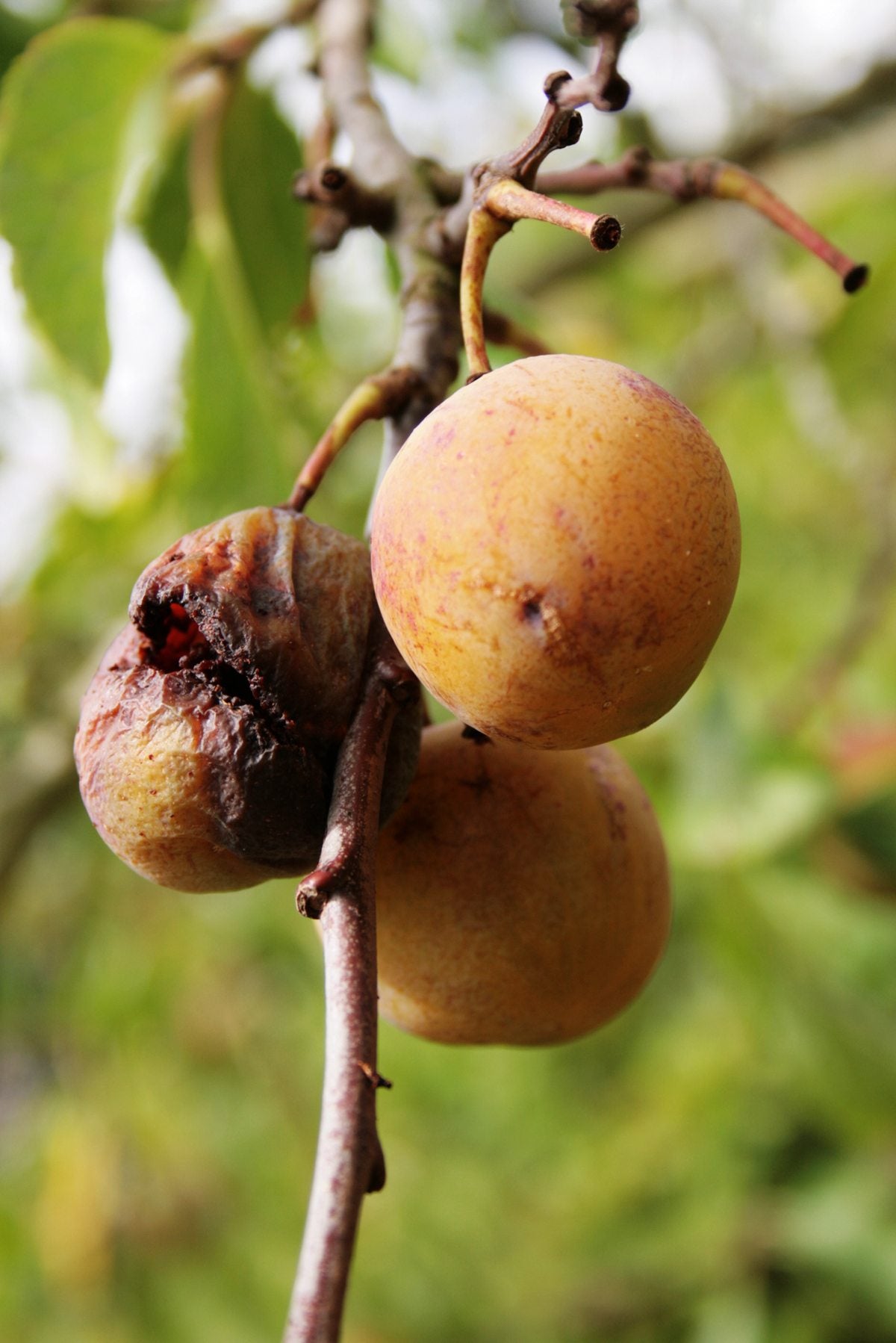Plums With Brown Rot: Learn About Treatment For Brown Rot In Plums


More and more home gardeners are growing plants for food. Ornamental trees and shrubs are being replaced with dwarf fruit trees or berry bushes. Fruit bearing plants have blossoms in the spring, followed by mid to late summer or fall fruit, and some even have beautiful fall color. They can be a beautiful and useful addition to the landscape. However, fruit bearing plants can be susceptible to pests and diseases that ornamentals are not bothered by. Citrus trees can be infected by Asian citrus psyllids, apple trees can be attacked by twig-cutter weevils, and stone fruit trees can be infected by brown rot. In this article, we’ll take a closer look at brown rot plum tree disease.
Plums with Brown Rot
Brown rot on plums is a fungal disease scientifically classified as Monilinia fructicola. It can affect not only plums but other stone fruit trees such as peaches, cherries, and apricots. Signs or symptoms of brown rot plum tree disease are:
- Brown wilted blossoms
- Flowers may ooze a brown, sticky sap
- Twig blight or cankers on fruit producing branches
- Dark, sunken rotting spots on fruit, that grow very quickly
- Visible fuzzy tan-gray spores on fruit
- Shriveling of fruit or mummified appearance of fruit
Wet, humid weather plays a factor in the growth and spread of Monilinia fructicola. Humidity and temperatures between 65 and 77 degrees F. (18-25 C.) provide the disease with the perfect growing conditions. In spring, spores of the disease are released from last year’s mummified fruits or cankers and carried in the wind. When these spores land on any wet surface of a stone fruit tree, it can infect the whole tree within five hours. Young fruits are more resistant but become more susceptible as they mature. Brown rot of plum trees can totally rot and mummify fruit in just two days.
Treatment for Brown Rot in Plums
Brown rot can survive over winter, protected in the mummified fruits or cankers on the branches. In spring, when humidity and temperatures are just right, the spores are released, and the infection cycle continues. Therefore, the best steps you can take in controlling brown rot in plums is prevention. Here are steps you can take to prevent brown rot on plums or other stone fruit trees: Select varieties that are more resistant to brown rot.
- Plant stone fruit trees in a well-draining, open, and airy location in full sun.
- Inspect and prune stone fruit trees regularly, removing any suspicious looking limbs, flowers, or fruit.
- Prune any crowded or crossing branches to keep the tree’s canopy open to airflow and sunlight.
- Thin out crowded fruit, as fruits that are touching or rubbing can quickly spread the disease.
- Keep the area around stone fruit trees clean and free of debris. Dispose of any fallen fruit clippings immediately to reduce the risk of re-infection.
Unfortunately, we don’t always see the early signs of brown rot until it has already infected most of tree and it is too late for preventative steps. Then we must turn to treatments for brown rot in plums and other stone fruit. For controlling brown rot in plums, there’s little you can do but these tips should help:
- Remove and dispose of all infected flowers, fruit, or branches.
- Spray entire fruit tree thoroughly with a fungicide like lime sulfur, chlorothalonil, captan, thiophanate methyl, or myclobutanil.
- If there are reports of brown rot on plums in your area or your stone fruit tree has suffered from it in the past, you can spray it with a fungicide preventatively every spring just as the flowers begin to bud.
Gardening tips, videos, info and more delivered right to your inbox!
Sign up for the Gardening Know How newsletter today and receive a free copy of our e-book "How to Grow Delicious Tomatoes".
-
 Looking For Plants To Give You The Soft And Fuzzies? Try These 5 Fuzzy Leaf Plant Options
Looking For Plants To Give You The Soft And Fuzzies? Try These 5 Fuzzy Leaf Plant OptionsLovers of texture, drama, silver foliage and tactile plants will adore these special sensory garden additions. These fuzzy leaf plant options will leave you all aglow
By Susan Albert
-
 Get Ready For A Summer Of Hummers! Grow These Full Sun Hummingbird Plants and Flowers
Get Ready For A Summer Of Hummers! Grow These Full Sun Hummingbird Plants and FlowersIf you’re lucky enough to enjoy a sunny backyard, make sure you are maxing out on your pollinator opportunities and grow these full sun hummingbird plants and flowers
By Tonya Barnett